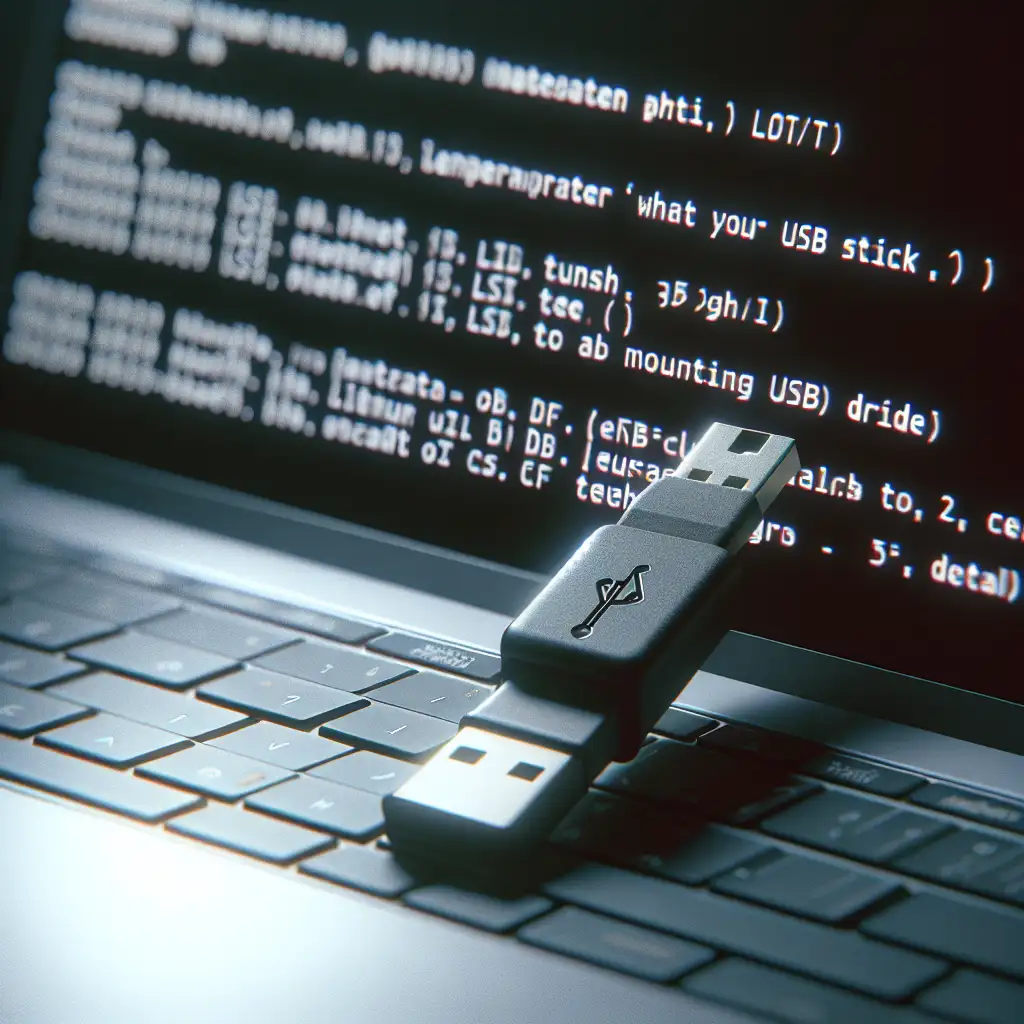Mastering USB Mounting in Linux: From Auto-Mounting to Manual Control
Forget the myth that Linux USB mounting is a “set it and forget it” process—discover how mastering both automatic and manual mounting gives you unparalleled control and security over your data.
If you’re a Linux user, handling USB drives might seem straightforward: plug it in, and your desktop environment magically shows the contents. But behind this simple interaction lies a powerful system mechanism that, when understood, can dramatically improve how you manage data, automate workflows, and troubleshoot issues on your machines.
In this post, we’ll walk through the essentials of USB mounting in Linux—from how auto-mounting works under the hood to how you can take manual control for precision, customization, and security.
Why Understanding USB Mounting Matters
Whether you're transferring files between computers, backing up important data, or running headless servers without GUI tools, knowing how USB mount points are created and controlled is crucial. Proper management allows you to:
- Access data reliably regardless of desktop environment
- Prevent unauthorized access through controlled mount options
- Customize mount behavior for performance or compatibility
- Troubleshoot when drives won’t mount automatically
- Script mounting processes for automation needs
Now let’s dive right in.
How USB Auto-Mounting Works in Linux
Most modern Linux distributions support auto-mounting out of the box:
-
GUI environments (GNOME, KDE) detect USB insertions via services like
udisks2orgvfs, automatically mounting them under directories such as/media/username/usb-label. -
System services monitor hardware events (
udev) and trigger automounters (udisks,udisks2).
This convenience means users rarely need to manually mount their drives unless something goes wrong or they want custom behavior.
Quick demo: Plug in a USB flash drive — after a moment you should see it appear with a folder shortcut or icon. Check the mount point by running:
lsblk -o NAME,MOUNTPOINT,SIZE,LABEL | grep sd
Look for your device (like /dev/sdb1) and its corresponding mount directory.
Manual Mounting: Take Full Control
Sometimes auto-mount doesn’t work (e.g., no GUI available), or you want specific mount options like read-only access or no execution permissions. Here's how to manually mount a USB drive.
Step 1: Identify the Device
Plug in your drive and identify it with:
sudo fdisk -l
# Or use:
lsblk
Example output snippet:
sdb 8:16 1 15G 0 disk
└─sdb1 8:17 1 15G 0 part /media/user/USB_DISK
Here /dev/sdb1 is our partition to mount.
Step 2: Create a Mount Point (if needed)
You can choose where to mount — commonly inside /mnt or /media.
sudo mkdir -p /mnt/usbdrive
Step 3: Mount the Device
Mount with default options:
sudo mount /dev/sdb1 /mnt/usbdrive
Check mounted drives:
mount | grep /mnt/usbdrive
Your drive’s content will now be accessible at /mnt/usbdrive.
Step 4 (Optional): Mount with Options
For example, if you want read-only access for safety:
sudo mount -o ro /dev/sdb1 /mnt/usbdrive
Common options include:
| Option | Description |
|---|---|
| ro | Mount read-only |
| noexec | Prevent execution of binaries |
| nosuid | Ignore set-user-identifier bits |
| uid=1000,gid=1000 | Set ownership by user/group |
To specify filesystem type explicitly (helpful sometimes):
sudo mount -t vfat /dev/sdb1 /mnt/usbdrive
(vfat for FAT32/exFAT USB drives.)
Unmounting Properly
Before removing your USB device, always unmount safely to avoid corruption:
sudo umount /mnt/usbdrive
If it's busy (in use), see which processes block it:
sudo lsof /mnt/usbdrive
Then close those before unmounting again.
Automate USB Mounting with /etc/fstab
If you frequently use specific USB drives on servers or setups without GUIs, automount via the filesystem table (fstab) is handy.
Example entry for a FAT32 drive mounted at boot:
UUID=XXXX-XXXX /mnt/usbdrive vfat defaults,noauto,user,rw 0 0
How to find UUID:
blkid /dev/sdb1
Replace UUID=XXXX-XXXX with the actual UUID from output.
Notes:
noauto: Don’t auto-mount at boot.user: Allow regular user to mount/unmount.
Mount later by running:
mount /mnt/usbdrive
Dealing with Common Troubleshooting Issues
Drive doesn’t show up?
- Check if kernel sees device:
dmesg | tail -n20
- Confirm device node exists (
/dev/sdb1).
Permission denied accessing mounted files?
Ensure proper UID/GID ownership with mount options (especially on VFAT).
Example for user ID 1000:
sudo mount -o uid=1000,gid=1000 /dev/sdb1 /mnt/usbdrive
Filesystem not recognized?
Install necessary tools like exfat-utils, ntfs-3g, depending on your drive format.
Install example on Debian-based distros:
sudo apt install exfat-fuse exfat-utils ntfs-3g
Wrapping Up
Mastering both automatic and manual USB mounting puts powerful tools into your hands—freeing you from relying solely on desktop environments’ convenience features. You’ll gain better visibility into what’s happening behind the scenes while improving security and automation potential.
Summary of commands covered:
# Identify devices:
lsblk
sudo fdisk -l
# Mount manually:
sudo mkdir -p /mnt/usbdrive
sudo mount /dev/sdb1 /mnt/usbdrive
# Unmount safely:
sudo umount /mnt/usbdrive
# Find UUID:
blkid /dev/sdb1
# Example fstab entry syntax:
UUID=XXXX-XXXX /mnt/usbdrive vfat defaults,noauto,user,rw 0 0
Equip yourself with these steps—you'll never be caught off guard handling external storage again. Feel free to experiment safely on non-critical systems!
Happy mounting! ⚡️
Did this guide help? Feel free to leave comments below about your own tips or tricky USB scenarios!
